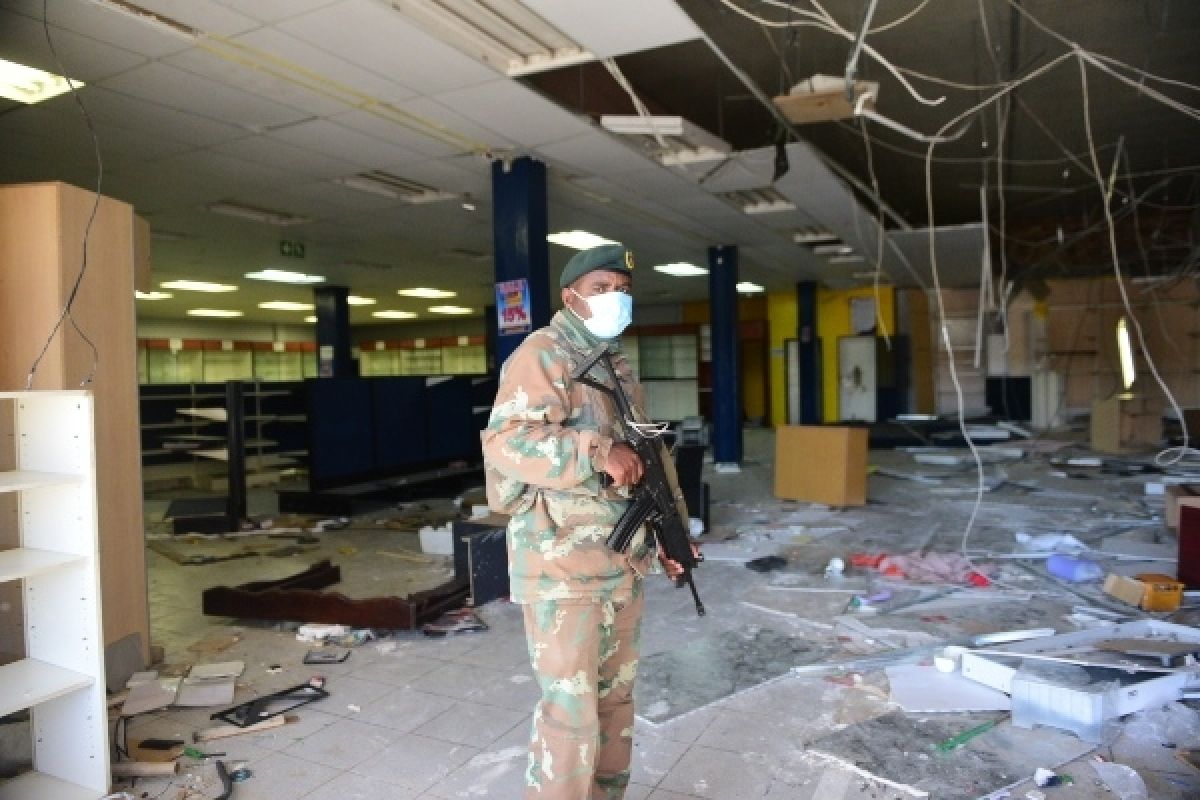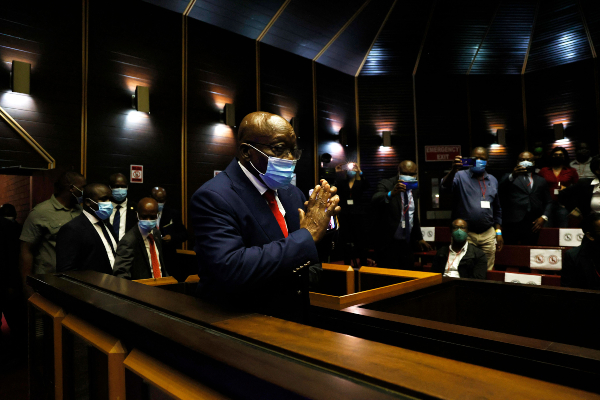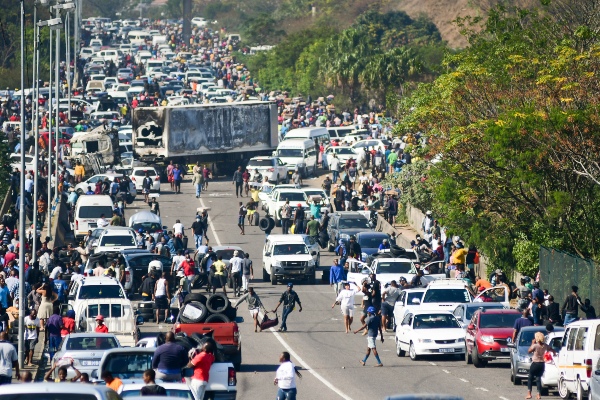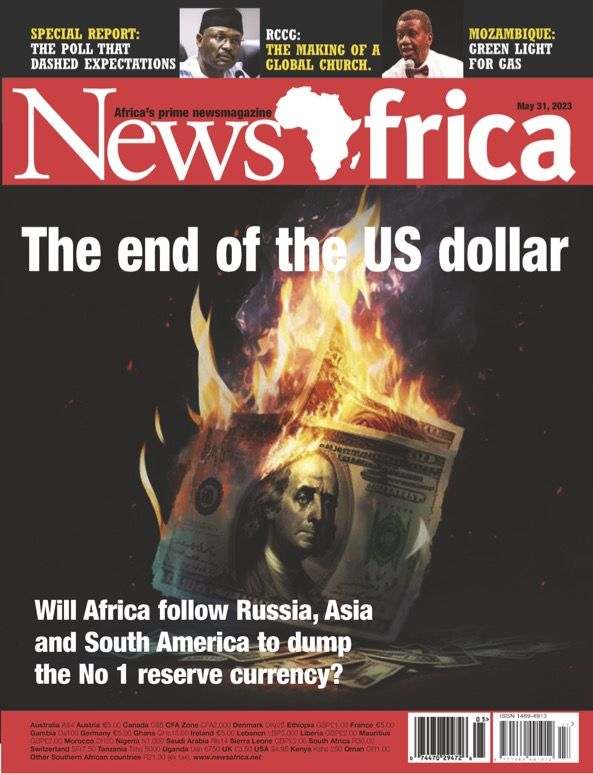South Africa reeling after recent rioting

More than 300 died during the eight days of looting and violence that followed former president Jacob Zuma’s arrest. By Miriam Mannak in Cape Town.
South Africa’s Gauteng and KwaZulu-Natal provinces descended into a violent frenzy of riots, mass looting and sheer destruction of public and private property in July.
Hundreds of people lost their lives in the process, many more were injured, and the economy suffered billions of dollars’ worth of damages, as rioters looted businesses across Johannesburg, Durban, Pietermaritzburg and other towns in the two provinces, following Jacob Zuma’s arrest.
KwaZulu-Natal, the former president’s home province, was hit hardest during the eight days of unrest.
According to eThekwini mayor Mxolisi Kaunda, at least 45,000 businesses, formal and informal, were looted, burnt or vandalised during the widespread unrest in the second and third week of July.
The South African Property Owners Association (SAPOA), which represents just a fraction of the country’s commercial and industrial property, estimated that rioters and looters had damaged 160 shopping malls in its portfolio, 11 warehouses and eight factories.
Large corporations such as Heineken, too, were targeted.
The Dutch beer brewer had one of its warehouses looted of stock, office and IT equipment, batteries, truck tyres and empty crates.
Two depots of South African Breweries were also attacked and cleared out, and a factory of electronics conglomerate LG was submitted to a similar fate.
The bulk of victims, however, were smaller and medium-sized enterprises (SMEs).
New data by BeyondCovid, an initiative that was set up to evaluate the impact of the Covid-19 lockdowns on South African SMEs but has since moved beyond that, estimates that 89 per cent of businesses affected by the unrest fall in the small and medium category. A large chunk of that group comprises ventures operating in townships, including salons, small grocers and cafés.
Fifty-thousand informal street vendors were also affected.
The impact of all of this on South Africa’s economy is severe.
KwaZulu-Natal and Gauteng collectively account for 50 per cent of the national GDP.
Economists estimate damages of between $2.4 and $3.4 billion, with ratings agency S&P anticipating South Africa’s GDP will contract by 0.7 per cent as a result of the riots.
The implications go beyond the damage to stores, shops and other businesses: SAPOA estimates 150,000 jobs are on the line because companies had to close their doors, either temporarily or forever.
This is highly problematic in a country such as South Africa, where 43.2 per cent of the working-age population is currently without a job.
Among young people, unemployment rates are even higher.
According to South Africa’s statistics agency Stats SA, 46.3 per cent of young people between the ages 15 to 34 are not in employment, education or training.
Revenge and retaliation
 Ex-president Jacob Zuma in the dock.
Ex-president Jacob Zuma in the dock.
This destructive chain reaction started after South Africa’s former president Jacob Zuma handed himself over to a local jail in Estcourt, KwaZulu-Natal. Zuma had been ordered to serve a 15-month prison sentence for defying a court order to testify before an anti-corruption commission.
His supporters vowed revenge.
What started as protests around Nkandla, the former leader’s homestead in KwaZulu-Natal, spread like wildfire, evolving into some of the most vicious riots the country has ever seen.
Within days, Durban, home of the largest container terminal in sub-Saharan Africa, found itself paralysed by disorder.
Footage of mass looting, burning cars and trucks, and rioters pillaging their way through shopping malls before setting them on fire left very little to the imagination.
At one stage, private ambulance services in the city and other parts of KwaZulu-Natal decided to halt their operations because it became too unsafe for them to operate.
Scavenging for basic necessities
‘Stay at home if in Durban. Gunshots heard everywhere and wide-scale looting and destruction,’ Mbali Ntuli, member of the official opposition party, the Democratic Alliance, wrote on Facebook on July 12, a few days after the unrest had started. ‘Do not attempt to go to the shops.’
While Durban burned, KwaZulu-Natal’s provincial capital, Pietermaritzburg, erupted into violence, too.
Thirty trucks were set alight near a toll bridge, and malls were ransacked and set aflame.
Other businesses followed suit, forcing owners and staff to take up arms and form human chains around their properties.
The unrest spread to Johannesburg and surrounding townships in Gauteng causing even more damage.
Besides claiming 330 lives, destroying thousands of businesses, and leaving scores without an income, the situation claimed another victim: South Africa’s already worrisome food security levels.
As roads to and from various large cities were closed by the authorities, to prevent looters from invading other areas, farmers found themselves unable to transport their products. This forced dairy farmers in KwaZulu-Natal to pour tens of thousands of litres of milk per day over their fields.
In the meantime, shops couldn’t restock, resulting in rising hunger levels.
Alef Meulenberg, director of youth development NGO Afrika Tikkun, said: ‘Many shops could or did not restock during the riots, which is understandable. Had I been a shop owner, I would have thought twice before restocking my store.’
Other essential links in South Africa’s food security chain were hit, too.
FoodForward SA, which rescues food from the retail sector and distributes it to 1,200 NGOs, was also one of the victims.
‘Our warehouse in Durban, which feeds 125,000 people in KwaZulu-Natal and Free State provinces, has been looted and had to be closed temporarily,’ the organisation said in a statement.
Much more than pro-Zuma riots

Looters on the freeway in the port city of Durban.
To prevent the cauldron from bubbling over completely, President Cyril Ramaphosa sent in the army – 2,500 soldiers initially, which he later increased to 25,000.
‘Let me be clear: we will take action to protect every person in this country against the threat of violence, intimidation, theft and looting,’ he said in his address on July 12.
‘We will not hesitate to arrest and prosecute those who perpetrate these actions and will ensure that they face the full might of our law. We will restore calm and order so that we can get on with the task of rebuilding this country and creating a better life for its people.’
While the violence has broadly been classified as pro-Zuma riots by the international press, experts say the situation is far more complex.
‘South Africa is a powder keg for unrest and disruption, and it doesn’t need much to set it off, as we have seen before,’ explained independent political analyst Daniel Silke.
‘If South Africa were a bomb, then the Jacob Zuma issue would be the small fuse on top, with a much bigger fuse being the socio-economic plight of the country. South Africa has been abused politically and economically for many decades, which started way before 1994.’
Silke refers to issues such as youth unemployment, poverty, hopelessness, and a sheer lack of opportunities – a reality facing millions of people.
‘This creates an atmosphere in which just a small spark can ignite something a lot more dangerous,’ he said.
What didn’t help the situation was the inability of South Africa’s weak institutions to make this type of internal unrest.
‘The slow, inefficient and sometimes unwilling to cooperate police force plays a role too. These are all ingredients, which when mixed can create an explosive situation,’ Silke added.
‘The country’s intelligence services, too, seem to have been inefficient. It was, essentially, the perfect storm.’
The unrest in numbers:
- 330 people dead; 251 in KwaZulu-Natal and 59 in Gauteng
- 2,500+ people arrested
- 90 pharmacies destroyed ‘beyond revival’
- 113 mobile phone towers damaged
- 120 ShopRite supermarkets, one in 10 of the company’s branches, destroyed by fire or looting
- 161 liquor outlets damaged in KwaZulu-Natal alone
- 300 malls and shopping centres damaged in Gauteng and KwaZulu-Natal
- 1,400 ATMs damaged or stolen
- 45,000 businesses in KwaZulu-Natal affected
- 150,000 jobs in jeopardy
The accused:
As well as arresting thousands of looters, the authorities also managed to apprehend a dozen alleged instigators. They include:
- Ngizwe Mchunu, a popular former radio personality, who handed himself over to Durban police in the third week of July after he was accused of inciting violence during a media briefing at a Bryanston hotel.
- Bruce Nimmerhoudt, from Gauteng’s West Rand municipality and a mayoral candidate for the Patriotic Alliance (PA), was apprehended on July 16 for allegedly circulating a WhatsApp voice note inciting public violence and urging people to block national highways. He has been charged with terrorism.
- Clarence Tabane, an ANC councillor from the West Rand, was arrested on July 18 for inciting communities to block roads and burn tyres in and around Roodepoort.
- Jacob Zuma’s son Duduzane and his twin sister Duduzile have had criminal charges filed against them by the Democratic Alliance, allegedly for inciting violence on social media after their father was arrested.



